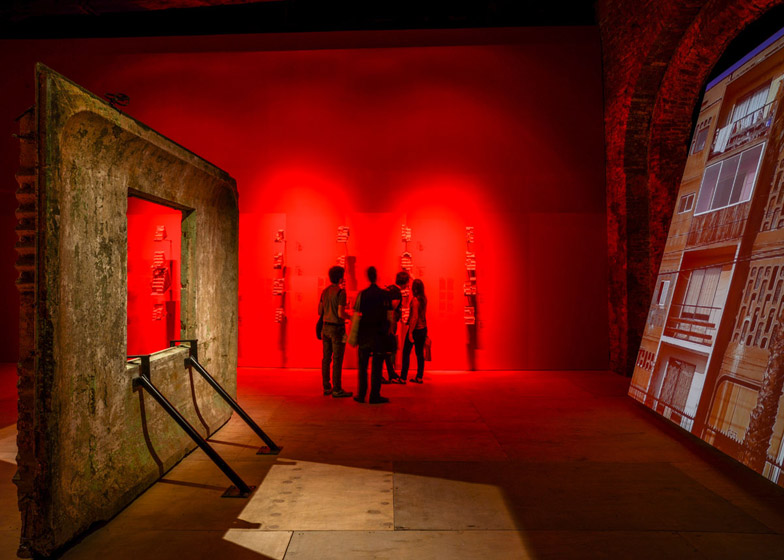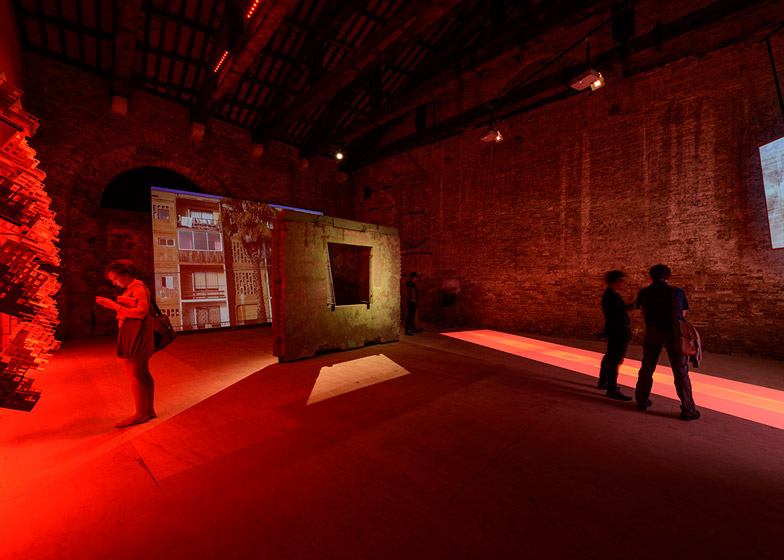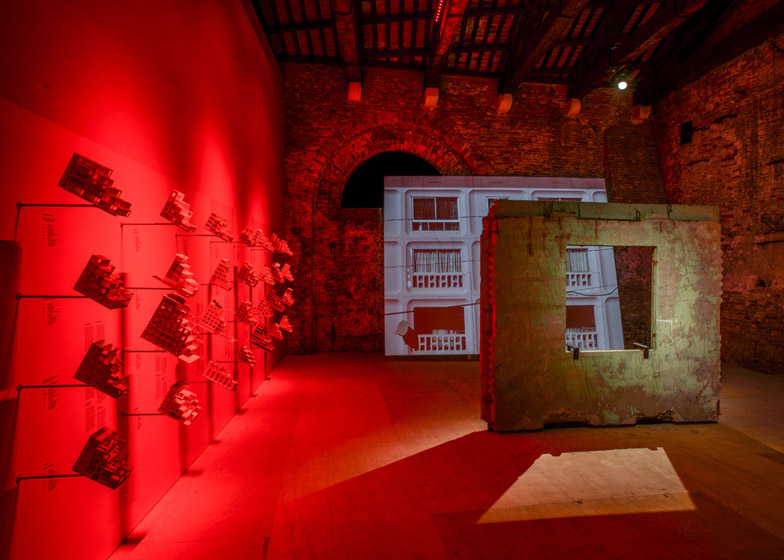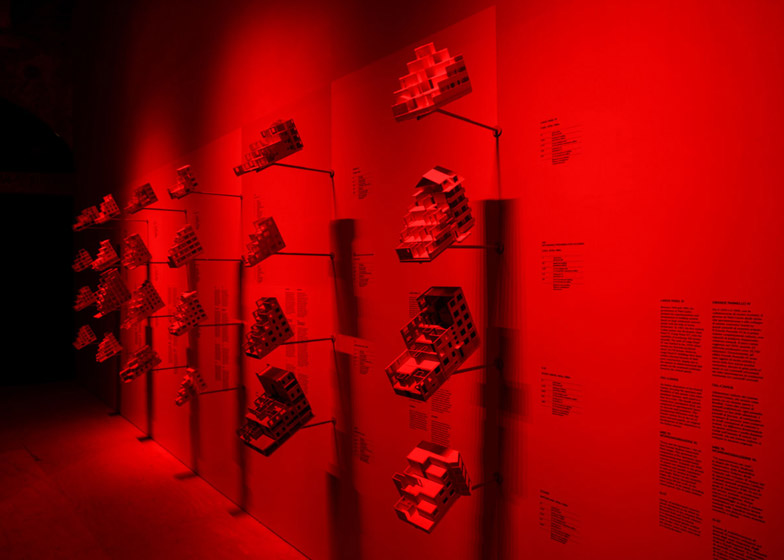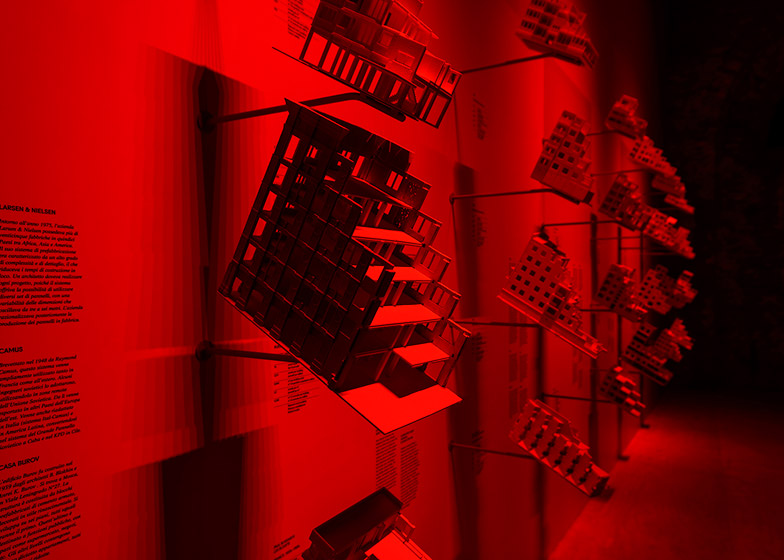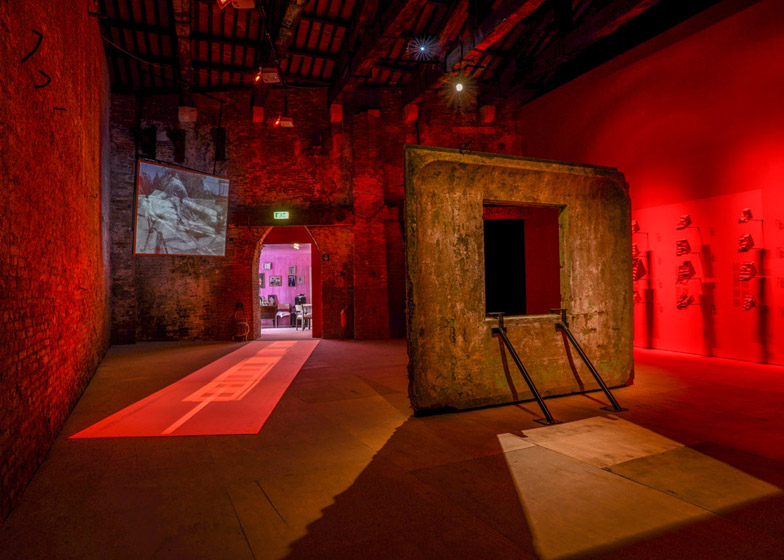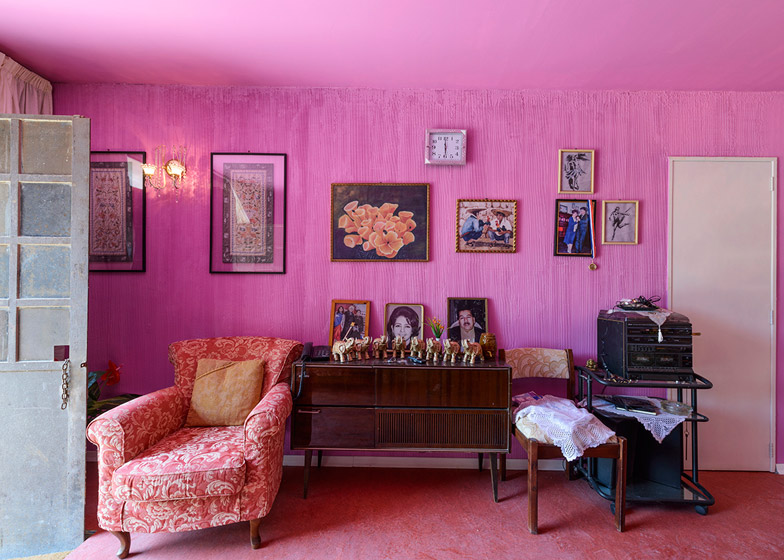Venice Architecture Biennale 2014: Chile's Silver Lion-winning pavilion at the biennale centres around a prefabricated concrete wall that is closely tied to both the country's political history and its 20th century housing stock (+ slideshow).
Positioned at the centre of the pavilion, the concrete panel dates back to 1972. According to curators Pedro Alonso and Hugo Palmarola, it was one of the first off the assembly line at the KPD plant – a prefabricated housing factory launched under the Soviet-Chilean alliance.
Inscribed with the signature of president Salvador Allende, the panel is said to have become a symbol of a powerful union. It later became adorned with a representation of the Madonna and Child, creating a Catholic emblem intended to represent "the triumph over socialism" during Augusto Pinochet's military dictatorship.
"Today the panel seems free of both presidential signatures and virgins, but they are still somehow there under its patinated surface, and through these inner resonances, this now monolith is presented as a ruin of modernity, both architectural and political," said the curators.
The historic wall is accompanied by architectural models, presenting 28 housing typologies developed worldwide between 1931 and 1981 that use similar concrete panel constructions. Illuminated beneath red lighting, these sit beside a large projected image of a typical facade.
At the entrance to the pavilion, the curators have also created a full-size reconstruction of a real apartment belonging to resident Silvia Gutiérrez, using second-hand furniture and objects from her living and dining rooms in Viña del Mar.
Entitled Monolith Controversies, the Chilean Pavilion was awarded the Silver Lion by the biennale jury as of the best national exhibitions, behind the Golden Lion-winning Korean Pavilion.
The jury praised the project for "revealing a critical chapter of the history of global circulation of modernity".
"Focusing on one essential element of modern architecture – a prefabricated concrete wall – it critically highlights the role of elements of architecture in different ideological and political contexts," said the judges.
The Chilean Pavilion is located at the Arsenale of the Venice biennale. Other pavilions here include one by Kosovo that features a spiky circular tower built from 692 traditional stools.
Follow Dezeen's coverage of the Venice Architecture Biennale »
Here's a project description from the curators:
Monolith Controversies
Upright but isolated, a large-concrete panel stands at the centre of the Chile Pavilion. This was one of the first panels to come off the assembly line at the KPD plant – a factory which produced prefabricated housing, and which had been donated by the Soviet Union to Salvador Allende's Chilean government in 1972.
The same panel has since been the subject of several political and ideological controversies, especially after Allende himself inscribed his signature into its wet cement – a gesture that was later rendered over during Augusto Pinochet's military dictatorship heralding a period that saw the panel transformed into a Catholic icon, with the addition of a Madonna and Child, and two colonial style lamp fittings.
Today the panel seems free of both presidential signatures and virgins, but they are still somehow there under its patinated surface, and through these inner resonances, this now monolith is presented as a ruin of modernity, both architectural and political. The panel is surrounded by the technical, typological and conceptual reconstruction of 28 large concrete panel systems developed worldwide between 1931 and 1981.
Within the historiographies of modern architecture, such a building tradition represents a relatively marginal position, despite the fact that more than 170 million concrete panel apartments were built during the second half of the 20th century. Lacking the leading figure of the author in conventional terms, the story of this panel tells about the one figure that came to replace the individual architect, the anonymous worker.
Curators: Pedro Alonso and Hugo Palmarola
Commissioner: Cristóbal Molina (National Council of Culture and the Arts of Chile)
Pavilion design: Gonzalo Puga
Visual identity: Martín Bravo
Production team: Felipe Aravena, José Hernández
Multimedia: Francisco Hernández, Micol Riva
Communication: Marcela Velásquez
Pavilion production and setup: Luigi D’Oro & Arguzia s.r.l.
Organiser: National Council of Culture and the Arts of Chile
Supporters: Fundación Imagen de Chile, DIRAC, CSAV, SAAM

